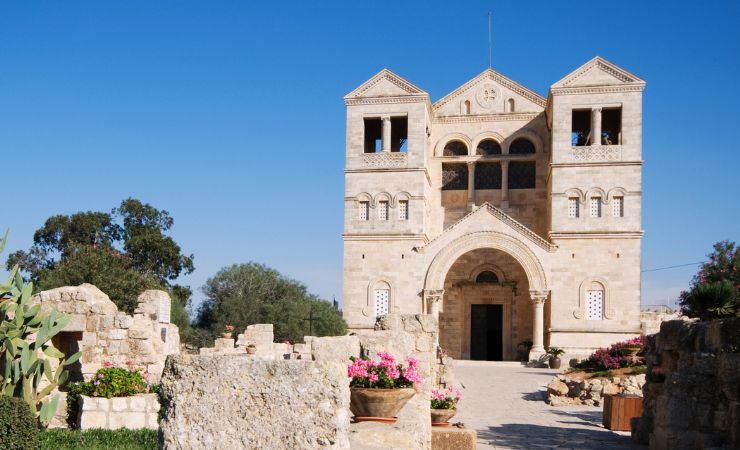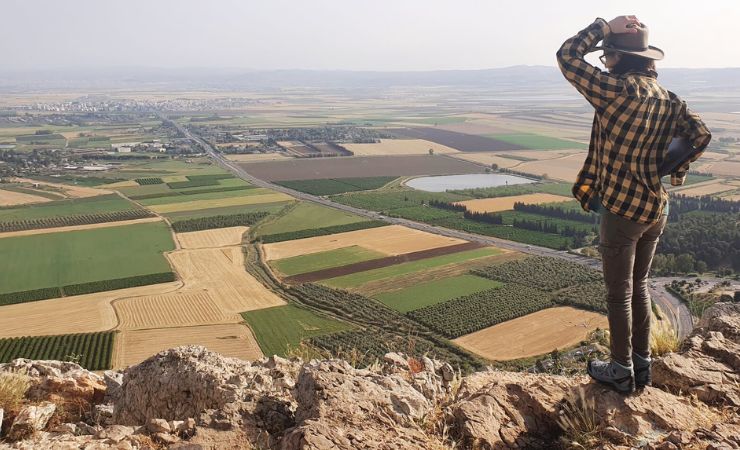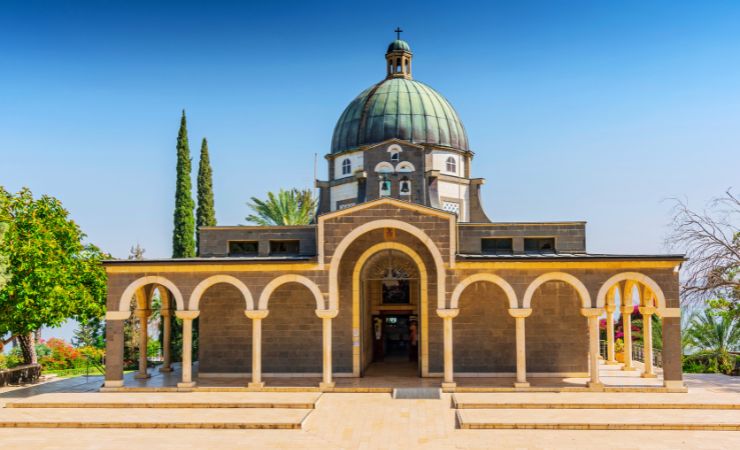The Zion Gate: A Gateway on Mount Zion
Introduction
The Zion Gate, also known as Bab Harat al-Yahud in Arabic and Sha’ar Zion in Hebrew is one of the eight gates in the Old City of Jerusalem. It stands as a testament to the city’s rich and tumultuous history.
Location
The Zion Gate is located in the southern part of Jerusalem’s Old City walls. It leads directly into the Armenian and Jewish Quarters, serving as a key access point to significant religious sites.
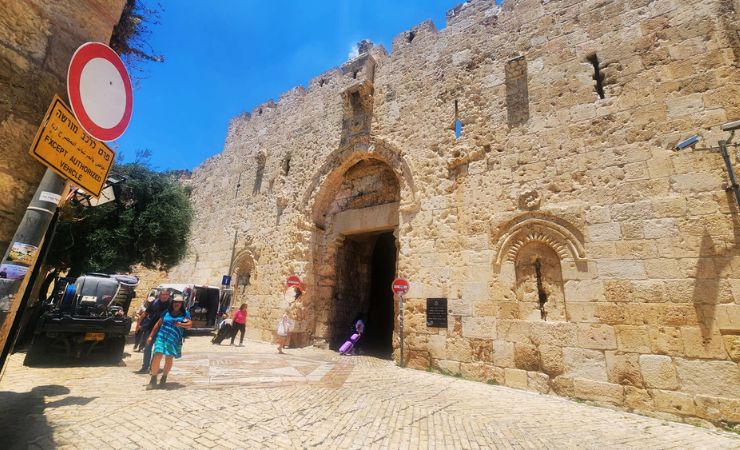
A Dive into the History of the Zion Gate
The Zion Gate, also known as Bab Harat al-Yahud in Arabic or Sha’ar Zion in Hebrew, was constructed in July 1540, during the reign of Ottoman Sultan Suleiman the Magnificent. The gate was built west of the location of the medieval gate, which was a direct continuation of the Street of the Jews, also known as the Cardo Maximus. As part of the fortification efforts, six sentry towers were erected in the southern segment of the wall, four of which were situated in the Mount Zion section.
In the second half of the nineteenth century, the area surrounding the Zion Gate underwent significant changes. A leper colony, slaughter house, and livestock market were established in its vicinity. Towards the end of the nineteenth century, shops were built along the length of the southern wall. However, these were later torn down during the British Mandate.
One of the most significant moments in the gate’s history occurred on May 13, 1948. As the British Army withdrew from Jerusalem amidst the escalating conflict, a major from the Suffolk Regiment presented Mordechai Weingarten with the key for the Zion Gate.
In 1984, the Jerusalem Foundation backed a meticulously planned project to refurbish the area around the gate. The project addressed damage resulting from both traffic and warfare, although signs of the heavy bombardment the gate suffered in 1948 and 1967 were preserved. The initiative also included the creation of a small plaza linking the gate to a parking zone, the construction of two seating areas, the restoration of the medieval gatehouse door damaged in a violent storm in 1894, and the stone paving of the area around the gate.
In 2008, more restoration work was carried out on the gate, marking its 468th birthday. This preservation work involved cleaning the stones and restoring those that had been damaged in the Israeli War of Independence. Notably, the original shell and bullet damage has been preserved, likely as a historical reminder of the gate’s past.
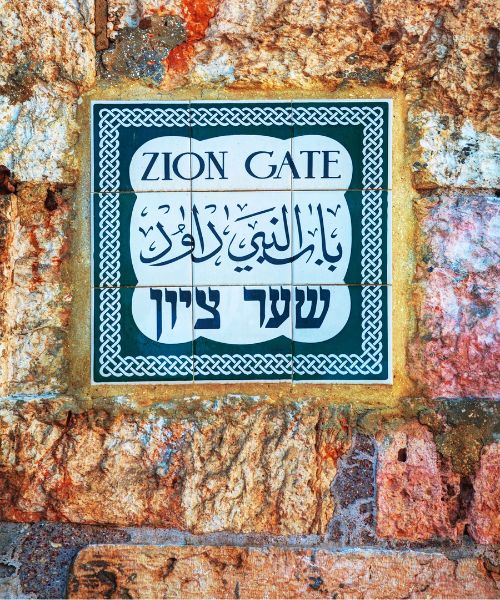
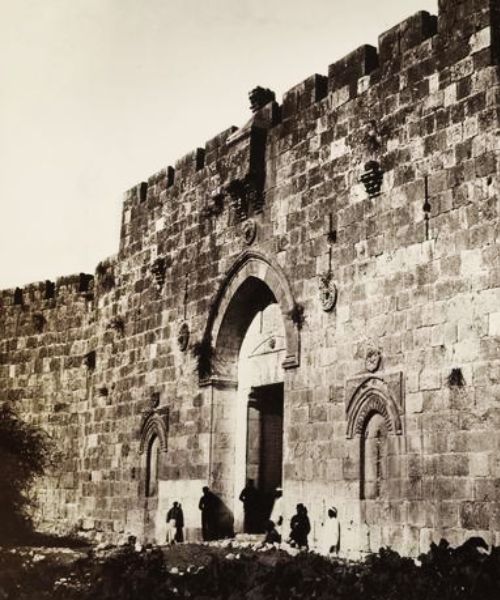
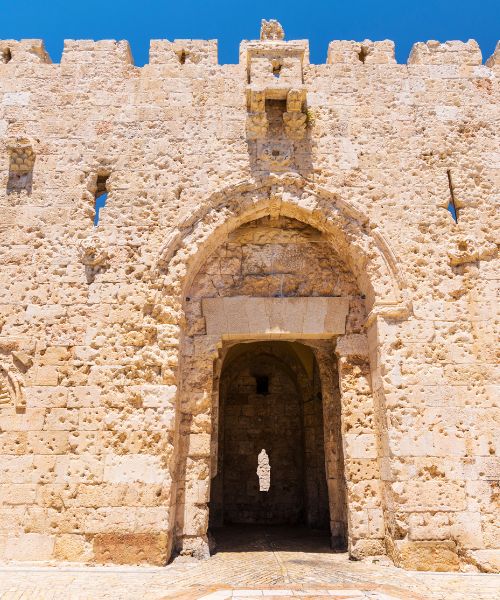
Architectural and Archaeological Features
The Zion Gate is a prime example of Ottoman period architecture. The gate’s design is strategic and defensive, featuring an L-shaped entryway. This design was intended to slow down incoming attackers and expose their unprotected side to the defenders, a common feature in fortifications of the period.
The gate’s exterior is adorned with a pointed arch, a characteristic element of Islamic architecture. Above the arch, an inscription in Arabic praises Sultan Suleiman and marks the year of the gate’s construction. This inscription serves as a historical record and adds to the gate’s cultural significance. Some of the decorative elements used in the gate were taken from other structures in the city.
Sources and Additional Reading:
Zion Gate – Wikipedia
Zion Gate – Jerusalem Foundation.
Center for Online Judaic Studies
Nearby Sites
- The Armenian Quarter: This area is rich in history, with beautiful narrow streets, old houses, and the St. James Cathedral, the heart of the Armenian Orthodox Church in Jerusalem.
-
The Room of the Last Supper: Also known as the Cenacle, this is a revered site located on Mount Zion, believed to be the location where Jesus had his final meal with his disciples before his crucifixion.
-
King David’s Tomb: This is a site traditionally believed to be the burial place of David, the famed king of Israel, and is located on Mount Zion in a building that also houses the Room of the Last Supper.
-
Dormition Abbey: This is a massive basilica located on Mount Zion, believed to be the site where the Virgin Mary passed away, or “fell asleep,” as the name ‘Dormition’ suggests.
-
The Broad Wall: The Broad Wall is an ancient defensive structure in Jerusalem, built during the reign of King Hezekiah in the 8th century BCE.

